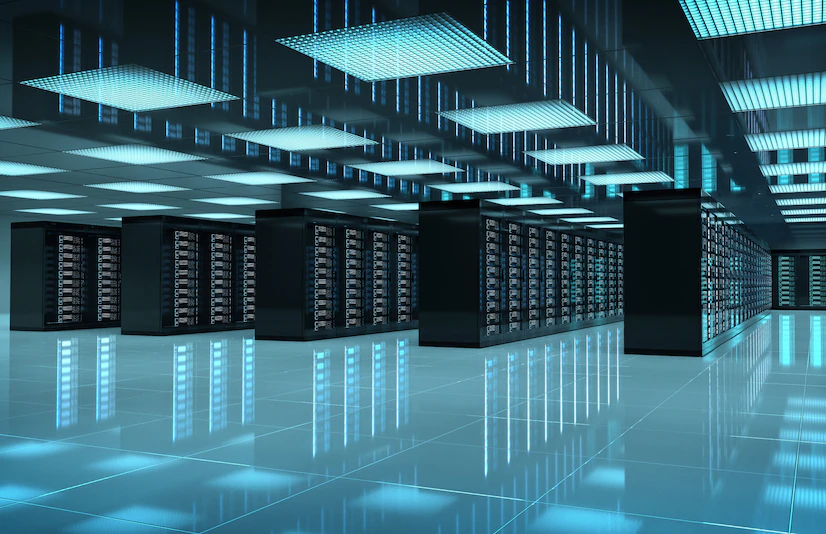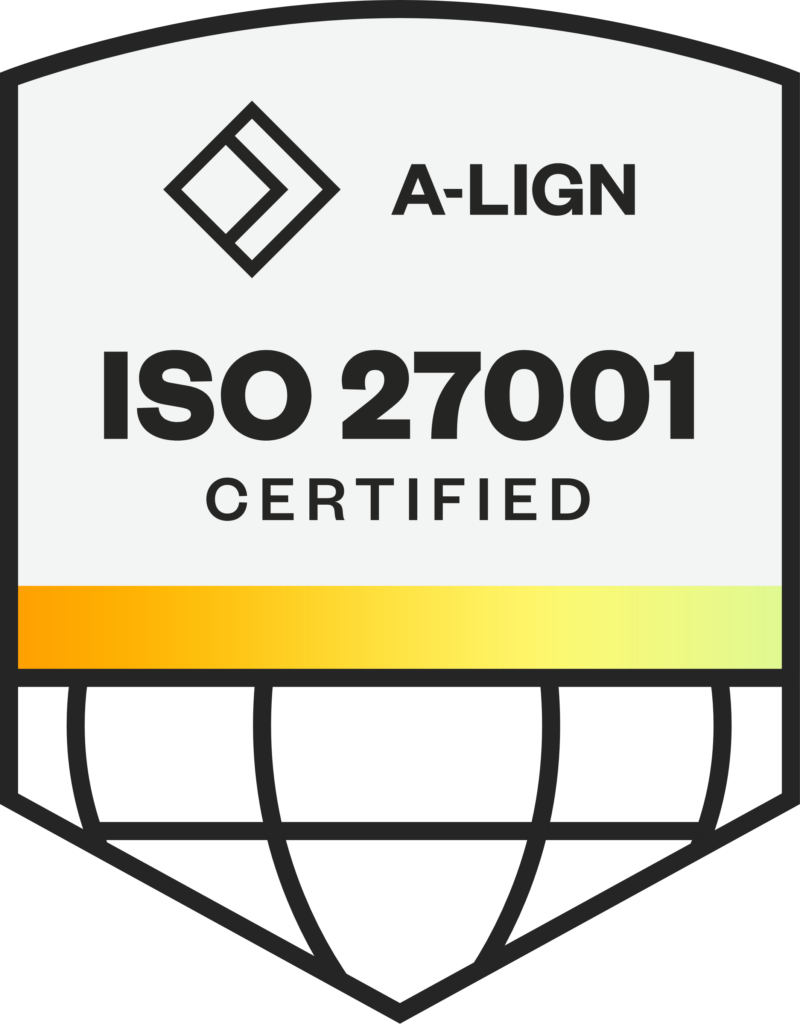Data Center Colocation (also known as “colo”) is a service that allows enterprise customers to rent space in which to keep their servers and other IT gear required for everyday operations.
The service providers share secure areas in cool, controlled environments that are perfect for servers while guaranteeing that bandwidth requirements are satisfied. In addition, the data center will provide service levels that ensure a specific level of uptime.
What is Colo?
Colocation covers several features associated with this type of data center. The phrase first refers to the ‘colocation’ of servers and other equipment from many firms in a single data center.
In many cases, a business often owns the hardware, and the data center only houses it (and occasionally maintains it).
It also alludes to the idea that a business’s equipment may be spread over several locations. For instance, they may have servers spread over three or four colocation data centers.
This is crucial for businesses with a broad geographic reach that wants to ensure that their computer systems are close to their actual offices.
What Kinds of Services Does a Data Center Colocation Facility Provide?
The infrastructure (building), cooling, electricity, bandwidth, physical security, and other options are often provided by the data center colocation provider, while the clients supply the servers and storage.
In addition, a facility may rent out space by the room, cage, rack, or cabinet. Today, many colocation data centers are extending their managed service offerings to support the business ambitions of their clients.
Types of Colocation Facilities
The two main categories of data center colocation facilities are retail and wholesale. However, in recent years, hybrid cloud-based colocation facilities, a third form, have proliferated.
Retail Colocation
A client rents space inside a data center, often a gated-off section, a spot inside a cage, or a rack.
Wholesale Colocation
Although the power and space requirements are often less stringent than retail vendors, a tenant rents a fully constructed data center facility.
Hybrid Cloud-based Colocation
Combines internal and external data center services on a hybrid cloud platform.
Benefits of Data Center Colocation
In contrast to operating a data center, customers may take advantage of a 100% uptime Service Level Agreement (SLA) and concentrate on their core businesses.
Additionally, colocation offers hundreds of network, cloud, and IT service providers dedicated, private connection choices to help you optimize your architecture.
- Improved connectivity – The completely redundant network connections in colocation data centers ensure that clients’ mission-critical applications constantly function without interruption.
- Enhanced network safety– Data centers feature top-notch network security, including the most recent firewalls and IDS systems, to identify and stop illegal access to their customers’ systems.
- Reliable power source– Through the use of several power grids, diesel generators, dual battery backup systems, and rigorous maintenance procedures, colocation data centers provide power redundancy.
- Bursting potential– Customers that use colocation facilities can increase bandwidth levels to meet their traffic demands without making additional financial expenditures. Data surges are spread among many users over a long period, dramatically lowering bandwidth costs.
- Room for growth – Colocation enables you to upgrade your infrastructure without incurring capital costs as your business expands. If your business grows, your IT infrastructure can quickly and inexpensively increase to accommodate it.
- A step toward cloud migration- If your organization plans to migrate to the cloud shortly, colocation ensures a smooth transition by enabling you to relocate your equipment to an offsite location with enhanced capacity and performance to satisfy business demands.
Do colocation tenants need DCIM solution services?
For a complete view and administration of their whole computing infrastructure, a mature business with an establishedDCIM solution should be able to monitor their assets at colocation providers and distant edge locations.
DCIM software allows mission-critical facility providers to constantly improve their operations to achieve the best performance levels for their tenants’ benefit.
Today’s DCIM solutions go well beyond the restrictions of building management and simple automation systems, providing in-depth visibility into the workflow process, including historical patterns, anticipating difficulties, incident reporting, and SLA breaches.
A DCIM solution is as essential as security at the front door for colocation providers prioritizing services for their tenants.
- Viewing power, space, capacity, and data use safely without jeopardizing other tenants’ security.
- Accurate billing based on actual energy use.
- Providing evidence of Service Level Agreement (SLA) adherence.
A company developing a colocation-only strategy would include a data center infrastructure management solution to get more detailed visibility into their provider’s infrastructure and keep track of SLA performance.
Progressive service providers offer their tenants data center infrastructure management services with various insights, reporting and local management capabilities.
What factors should I think about while selecting my colocation data center?
Flexibility
If you’re employing a colo for expansion, flexibility, power, and space is crucial. Modern, energy-hungry technology needs more capacity and on-demand accessibility.
Term contracts
Colo clients may become trapped in lengthy agreements, making it difficult to renegotiate rates when prices drop.
Transparency
One way to ensure openness is to work with a colocation provider that offers transparency and some level of remote self-monitoring and administration.
Connectivity
One of the significant incentives and benefits of using a shared data center support system is connectivity. You may produce considerable value for your company through interconnectivity, efficiently peer with your partners and distributors, and even connect with your rivals.
They must be carrier-neutral and serve a large ecosystem of interconnected clients. Therefore, before choosing a facility, ensure you are well informed on its connectivity possibilities.
User Experience
If you use your colocation facility for your more significant applications, network bandwidth and the redundancy of key services are crucial factors to consider in their SLAs (refer to Tier classifications).
DCIM’s Significance for Colocation Providers
From physical and virtual inventory to power and cooling systems, DCIM can manage and monitor every component of the IT and facilities infrastructure. Therefore, a well-thought-out and implemented DCIM should not only meet the key requirements of power, capacity, and cooling management for colocation providers, but it may also help them differentiate their offers with appealing value-added services.
Power Management
Because DCIM can display real power values alongside actual power use, colocation providers may immediately identify stranded power and avoid costly overbuilding. DCIM, for example, can provide present and historical energy efficiency measurements to calculate power utilization effectiveness and data center infrastructure efficiency.
For visibility into loading and the relationship of a client’s equipment to the power grid, automated mapping displays the active power path, utilization, and device dependencies in the power chain.
Capacity Management
A real-time, comprehensive inventory of floor and rack space delivers useful perspectives to IT and facilities, making collaborating easier to maximize space and power usage, identify hidden capacity, and decrease floor and zone management time and costs.
Cooling Management
A comprehensive profile of cooling systems, from air conditioning and air handling units to valves and dampers, provides information on the actual capacity and usage of cooling subsystems, device dependencies, and accurate, real-time status for each device.
Colocation Data Center vs Cloud
An organization’s IT assets are hosted in the facilities of a third-party provider in both colocation data centers and cloud environments, which offers greater cost, scalability, and dependability options.
However, these two data center deployment approaches differ significantly from one another.
An organization can own and manage its own physical assets, such as computers and networking infrastructure, in a colo data center. The management and security of the company’s whole infrastructure stack are solely its responsibility under this arrangement.
The cloud provider owns and controls the underlying physical assets in a cloud environment. Virtual assets are accessible to customers, and the cloud service model determines how much access and control the consumer has over the provider (PaaS, IaaS, SaaS, for example.).
In this architecture, the management and security of the infrastructure stack are shared by the cloud provider and the client.
Data Center Colocation Trends
1. Post-covid data centers will be more adaptable and on the cutting edge.
Regional data centers have continued to expand rapidly, bolstered by the health context and the critical benefits of a more broadly spread IT infrastructure.
This tendency is expected to accelerate in the next few years to sustain our post-covid digital economy (encompassing teleworking, video streaming, development of e-commerce, IoT, 5G and so on).
While availability is still of the foremost importance, these Edge data centers are also more nimble and energy-efficient, with lower latency. In addition, their ultra-modular architecture provides them with a competitive advantage in terms of energy efficiency.
2. Advances in AI
Customers are interested in colocation facilities suited for the environmental demands of GPUs due to the development of AI across various sectors.
GPUs, along with variants such as data processing units (DPUs) and infrastructure processing units (IPUs), are evolving from technical marvels to the foundational components of compute servers.
The issue is caused by the power consumption and heat creation of next-generation CPU designs. For example, a single rack unit server used to consume 50 watts of electricity, while today’s GPUs, DPUs, and IPUs need 1 kilowatt per 1U server.
One or two AI cabinets can be powered in a normal data center. However, when rows of cabinets become the standard and compute density rises, the capacity of a typical data center to cope falls.
3. Standardize their Environmental footprint estimate
The data center industry is eager to accelerate the development and implementation of sustainable techniques in order to reduce the sector’s carbon footprint. Pressure from market authorities, investors, and customers is accelerating this environmental obligation.
It promotes continual innovation, as seen by the use of liquid cooling, renewable energy, and even undersea data centers.
With continual measurement, data center sustainability has become a priority: installation must be optimized, from design to operation and throughout the life cycle, by incorporating all stakeholders within the ecosystem.
Even if they quantify their environmental effect, everyone must apply the same evaluation standards to make meaningful comparisons across facilities and operators.
Summing Up – The Impact of DCIM on Providers and Clients
The secret to effectively managing costs, capacity, and availability at a colocation provider is having complete and accurate visibility into your data center infrastructure.
Your Operations and Engineering teams can optimize resources at colocation facilities with the help of DCIM solutions, which also offer real-time data collection and analytics, allowing you to serve your customers better.
Data center infrastructure management has an internal and external impact on colo providers. Internally, it is used by providers to increase efficiency and resiliency, as well as to make more informed decisions about their infrastructure, projections, and billing models.
Clients of colocation facilities can use DCIM to gain insights into uptime and power usage and make critical decisions when negotiating contracts for future space. Furthermore, DCIM aids in remote asset management and capacity planning.
If you are looking for a next-generation DCIM solution with benefits for both providers of data center services and their clients, consider Modius OpenData.
Modius’ DCIM solution, OpenData, provides integrated tools to manage the assets and performance of colocation facilities, enterprise data centers, and critical infrastructure.
OpenData is a ready-to-deploy DCIM featuring an enterprise-class architecture that scales incredibly well. In addition, OpenData gives you real-time, normalized, actionable data accessible through a single sign-on and a single pane of glass.





